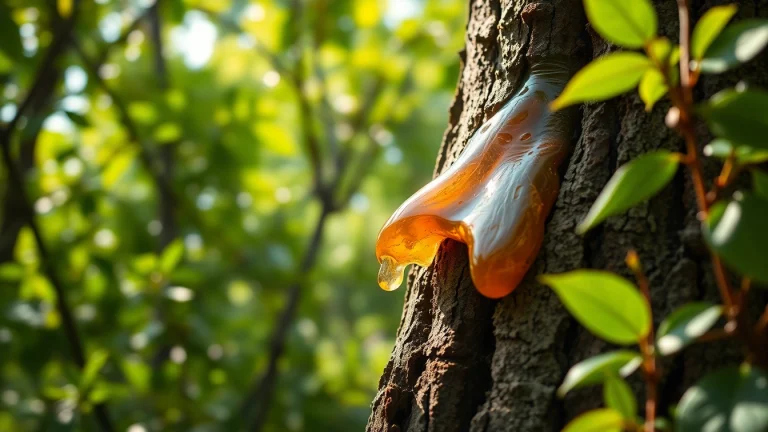
Understanding Benjoin: Benefits, Uses, and Cultural Significance
What is Benjoin? A Comprehensive Overview
Benjoin, often known as benzoin resin, is a balsamic resin obtained from the bark of several trees belonging to the genus Styrax. With a sweet, vanilla-like scent and a long history of use in various cultures, benjoin has gained popularity for its versatile applications in perfumery, traditional medicine, and even modern aromatherapy. As a natural material, Benjoin is notable for its unique properties that blend fragrance with various benefits, making it a valuable asset across different domains. This article explores the origin, benefits, and uses of benjoin, providing a well-rounded perspective on this remarkable substance.
The Origin and Sources of Benjoin
Benjoin is primarily sourced from the Styrax tonkinensis and Styrax benzoin trees, which are found in Southeast Asia, particularly in regions like Laos, Cambodia, and Thailand. The resin is extracted by making incisions in the bark and allowing the sap to ooze out and harden. Traditionally, these trees thrive in tropical climates and are often cultivated for their resins, which have been harvested since ancient times. The resin is not only a product of ecological significance but also deeply rooted in local cultures and economies.
Cultivation and Harvesting Techniques
The process of harvesting benjoin involves specific methods to maximize yield while ensuring the health of the trees. Farmers make small cuts in the bark in a manner that promotes resin flow while minimizing damage. This method requires expert knowledge to ensure that the trees are not over-tapped, which can lead to reduced production in the long run. After the resin hardens, it is collected and often processed further to enhance its aroma and purity. Cultivators also employ sustainable practices to maintain healthy tree populations, allowing this natural resource to remain viable for future generations.
Historical Uses and Cultural Significance
Historically, benjoin has been revered in various cultures. In ancient Egypt, it was used in religious rituals and as an ingredient in embalming mummies, reflecting its valuable status. Similarly, in traditional Chinese medicine, it is considered an important component for treating ailments such as cough and skin irritations. Across different societies, benjoin has been appreciated not just for its therapeutic properties but also for its role in spiritual rituals, symbolizing purification, protection, and healing.
The Benefits of Benjoin in Aromatherapy
In modern wellness practices, benjoin is widely utilized in aromatherapy, celebrated for its calming effects and ability to promote emotional well-being. The resin’s woody, balsamic aroma is believed to enhance relaxation, reduce anxiety, and create a warm, comforting environment. Understanding the specific properties and health benefits of benjoin can help individuals leverage its potential for enhancing their overall quality of life.
Essential Properties and Health Benefits
Benjoin possesses several health-promoting properties. It is known for its antiseptic, anti-inflammatory, and expectorant characteristics, making it a popular choice among wellness practitioners. The main components of benjoin include benzoin acid and various aromatic compounds that contribute to its soothing scent and therapeutic benefits. In inhalation therapy, benjoin is thought to help alleviate respiratory issues and promote easier breathing, while its grounding aroma can assist in reducing stress and enhancing mood.
How to Use Benjoin for Aromatherapy
Using benjoin in aromatherapy can be done in several ways. The most common method is through diffusion, where a few drops of benjoin essential oil are added to an oil diffuser. Another popular method involves combining benjoin essential oil with a carrier oil for topical application, such as on pulse points or during massage therapy. Additionally, creating a personal inhaler with benjoin can offer on-the-go therapeutic benefits and emotional support during stressful situations.
Popular Blends with Benjoin
Benjoin blends well with various essential oils, making it a versatile ingredient in many aromatic formulations. It pairs beautifully with citrus oils like bergamot and orange for uplifting blends, while woody oils such as cedarwood and sandalwood contribute to grounding scents. Additionally, floral oils like lavender and jasmine enhance relaxation, creating a harmonious balance in therapeutic applications. Experimenting with different blends can help users find the perfect combination that resonates with their emotional needs.
Using Benjoin in Traditional Medicine
Benjoin’s historical significance as a medicinal ingredient continues to thrive in traditional practices today. With a rich array of properties, it serves several purposes in the realm of natural healing. Understanding its medicinal properties and preparation methods can guide individuals looking to integrate benjoin into their health routines.
Medicinal Properties of Benjoin
The medicinal properties of benjoin contribute to its use in treating a variety of conditions. Its antiseptic quality helps prevent infections, particularly for skin irritations and minor wounds. Benjoin is also recognized for its ability to alleviate coughing and promote respiratory health, making it beneficial for colds and bronchitis. In traditional healing practices, benjoin is often used to enhance skin health and reduce symptoms associated with inflammation.
Preparation Methods for Benjoin
Preparation methods for benjoin can vary based on its intended use. For instance, when used in teas or tinctures, the resin is often infused in water or alcohol to extract its beneficial compounds. A typical recipe involves dissolving benjoin in hot water for tea or in alcohol for tinctures, allowing users to consume a concentrated form of its active ingredients. Additionally, benjoin can be infused in oils for topical applications, offering both benefits and a pleasant fragrance.
Potential Risks and Considerations
While benjoin is generally safe for use, it is essential to consider potential allergies or sensitivities. Some individuals may experience skin reactions or respiratory irritation when using benjoin, particularly in its concentrated form. It is recommended to perform a patch test before topical application and consult a healthcare professional when integrating it into a health regimen, especially for pregnant women and individuals with chronic conditions.
Benjoin in Contemporary Products and Crafts
As a versatile ingredient, benjoin plays a significant role in various contemporary crafts and products, extending beyond traditional uses to modern applications in the health and beauty sectors. Understanding these modern products can help consumers make informed choices about their use of benjoin in everyday life.
Applications in Perfume and Incense
Benjoin is widely used in the perfume industry as a fixative, enhancing the longevity and depth of fragrances. Its sweet, balsamic aroma complements many scent profiles, adding richness to both floral and woody compositions. In incense production, benjoin is favored for its ability to create a calming, grounding smoke that enhances meditation and relaxation practices. Crafting personal incense blends with benjoin can be a rewarding endeavor for enthusiasts aiming to incorporate this resin’s soothing properties into their routines.
Role in Natural Health and Skincare
In the realm of natural health and skincare, benjoin is valued for its soothing properties and ability to enhance skin healing. It is commonly found in products like creams, ointments, and salves designed for treating dry skin, minor cuts, and irritations. Benjoin’s anti-inflammatory properties make it a delicious addition to formulas aimed at relieving skin redness and promoting an even tone. For those interested in DIY skincare, incorporating benjoin into homemade beauty recipes can provide both efficacy and natural fragrance.
DIY Projects Incorporating Benjoin
Engaging in DIY projects that feature benjoin can be a fun and creative way to appreciate this unique resin. Simple projects, such as making bath bombs or natural candles infused with benjoin oil, allow individuals to enjoy the aromatic benefits while relaxing at home. Herbal preparations like salves or balms can also be created at home, providing not only medicinal benefits but also the opportunity to customize ingredients based on personal preferences and needs.
How to Source High-Quality Benjoin
When it comes to exploring benjoin, sourcing high-quality products is crucial to ensuring efficacy and safety. Understanding how to identify authentic sources can empower consumers to make better choices and ultimately reap the full benefits of this astonishing resin.
Identifying Authentic Benjoin Products
To ensure the best quality of benjoin products, buyers should focus on sourcing from reputable suppliers. Authentic benjoin typically comes in the form of solid resin pieces or as essential oil distilled from the resin. Checking for certifications and organic labels can also serve as indicators of quality. Reviews and testimonials from previous customers can provide additional insights into the reliability and trustworthiness of the source.
Best Practices for Storage and Use
Proper storage of benjoin is essential to maintain its potency and aromatic qualities. It should be kept in a cool, dark place, away from direct sunlight and moisture. Solid resin should be stored in airtight containers, while essential oils can be kept in amber bottles to protect them from light degradation. When it comes to use, always adhere to recommended guidelines to avoid over-exposure or misuse, especially in therapeutic applications.
Comparative Analysis of Benjoin Sources
When comparing different sources of benjoin, it’s vital to consider factors such as origin, method of extraction, and purity. Natural and sustainably harvested benjoin from reputed suppliers is often superior in terms of healing properties and fragrance. A comparative analysis can reveal which sources provide the best quality and minimum contaminants, allowing consumers to make informed decisions for their health and wellness journeys.


